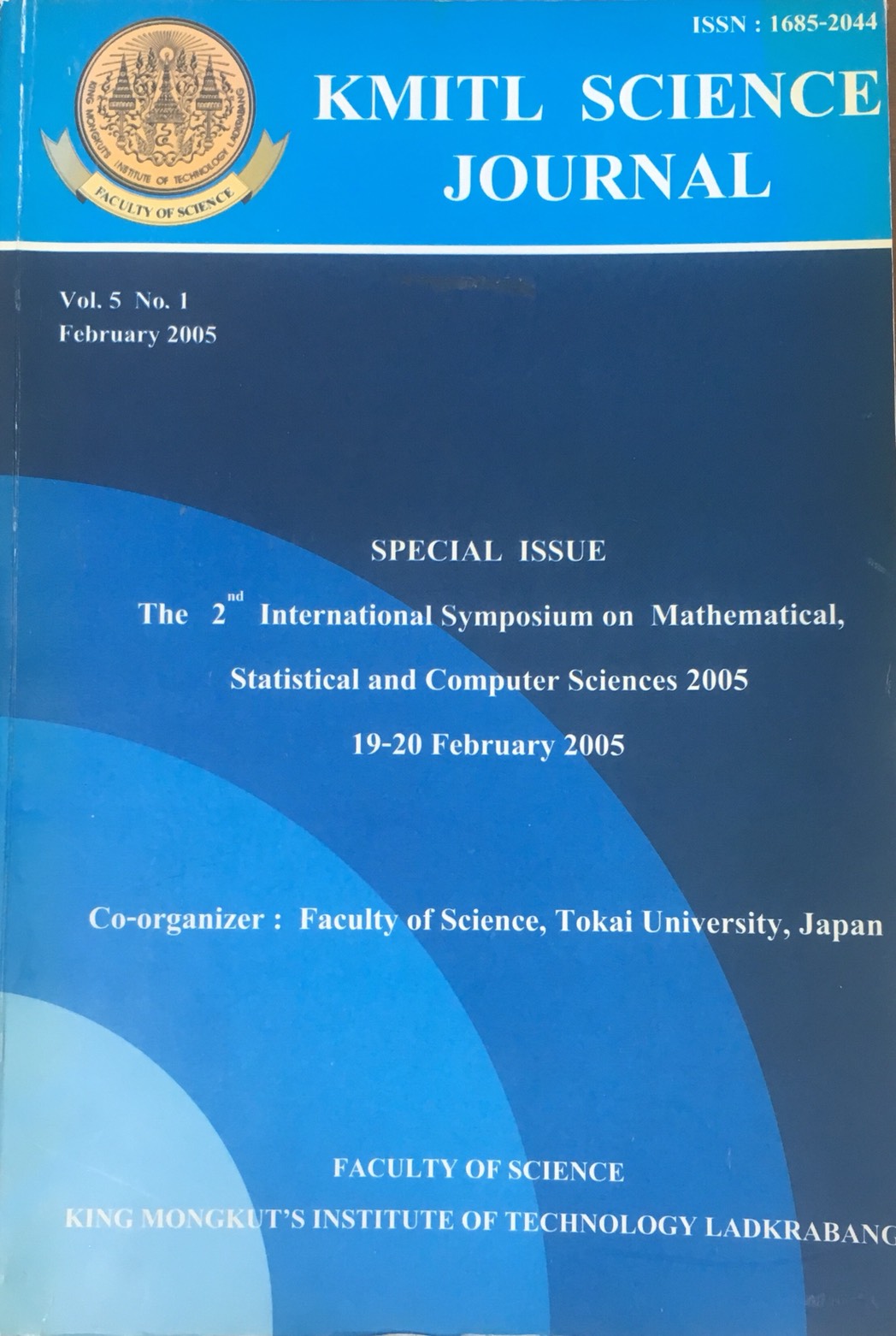Dynamic Distance Metric for Image Retrieval Systems
Main Article Content
Abstract
Query-by-one-example (QBE) has been a popular query system for content-based image retrieval (CBIR) for more than a decade. However, recent research has shown that a single image is not sufficient to form its semantics or concept of the intended query. Searching concept “car,” for instance, one might need many examples of car images in various colors. The color feature is then understood as a non-factor in the distance metric. This paper proposes a novel approach, which users can query using groups of query images. There are three possible groups: relevant (positive), irrelevant (negative) or neutral groups. The range for each feature within these groups of query images is defined. These ranges are used to adjust the weights of the features. As a result, some features may be cancelled out from the similarity computation. The measure then becomes a dynamic metric for image retrieval. This novel approach achieves a higher degree of precision and recall and, at the same time, significantly reduces the time complexity of matching. The proposed approach is tested against the ImageGrouper method. The results show that this approach is an effective and efficient technique for image retrieval systems.
Keywords: dynamic distance metric, range distance, content-based image retrieval, query-by-example
Corresponding author: E-mail: khnualsa@kmitl.ac.th , soonthar@cs.ucf.edu
Article Details
Copyright Transfer Statement
The copyright of this article is transferred to Current Applied Science and Technology journal with effect if and when the article is accepted for publication. The copyright transfer covers the exclusive right to reproduce and distribute the article, including reprints, translations, photographic reproductions, electronic form (offline, online) or any other reproductions of similar nature.
The author warrants that this contribution is original and that he/she has full power to make this grant. The author signs for and accepts responsibility for releasing this material on behalf of any and all co-authors.
Here is the link for download: Copyright transfer form.pdf
References
[2] Thomas E. Bjoerge and Edward Y. Chang, “Why one example is not enough for an image query,” In Proceedings of IEEE ICME 2004, 2004.
[3] http://www.ifp.uiuc.edu/~nakazato/grouper/
[4] Smith, J. R. and Chang S-F. Transform features for texture classification and discrimination in large image databases. In Proceedings of IEEE Intl. Conf. on Image Processing, 1994.
[5] Smith J. R. and Chang S-F. “Quad-Tree Segmentation for Texture-based Image Query.” In Proceedings of ACM 2nd International Conference on Multimedia, 1994.
[6] Strang, G. and Nguyen, T., “Wavelet and Filter Banks,” Wellesley-Cambridge Press, 1997.
[7] Zhou, X.S. and Huang, T.S., “Edge-based structural feature for content-base image retrieval,” Pattern Recognition Letters, Special issue on Image and Video Indexing, 2000.
[8] Gonzales, R. C. and Woods, R. E., “Digital Image Processing,” Addison-Wesley, 1992.
[9] A.W.M. Smeulders et al, Content-based image retrieval at the end of the early years. IEEE Trans. On PAMI, 22(12): 1349-1380, 2000.
[10] Ying Dai and Dawei Cai, “Imagery – based digital collection retrieval using eigen SGLD matrices,” In Proceedings of IEEE ICME 2004, 2004.
[11] Joo-Hwee Lim and Jesse S. Jin, “Image retrieval using spatial icons,” In Proceedings of IEEE ICME 2004, 2004.
[12] S. Berretti, G.D. Amico and A. Del Bimbo, “Shape representation by spatial partitioning for content based retrieval applications,” In Proceedings of IEEE ICME 2004, 2004.
[13] B. Ko, H. S. Lee, and H. Byun, “Region-based image retrieval system using efficient feature description,” In Proceedings of IEEE Int. Conf. on Pattern Recognition, Barcelona, Spain, 2000, pp. 283-286.
[14] F. Liu, X. Xiong, and K. L. Chan, “Natural image retrieval based on features of homogeneous color regions,” In Proceedings of IEEE on Image Analysis and Interpretation, Austin, Texas, Apr. 2000, pp. 73-77.
[15] Xiangyu Jin and James C. French, “Content-based image retrieval for multimedia databases: Improving image retrieval effectiveness via multiple queries,” Proceedings of the first ACM international workshop on Multimedia databases, Nov. 2003, pp. 86-93.


